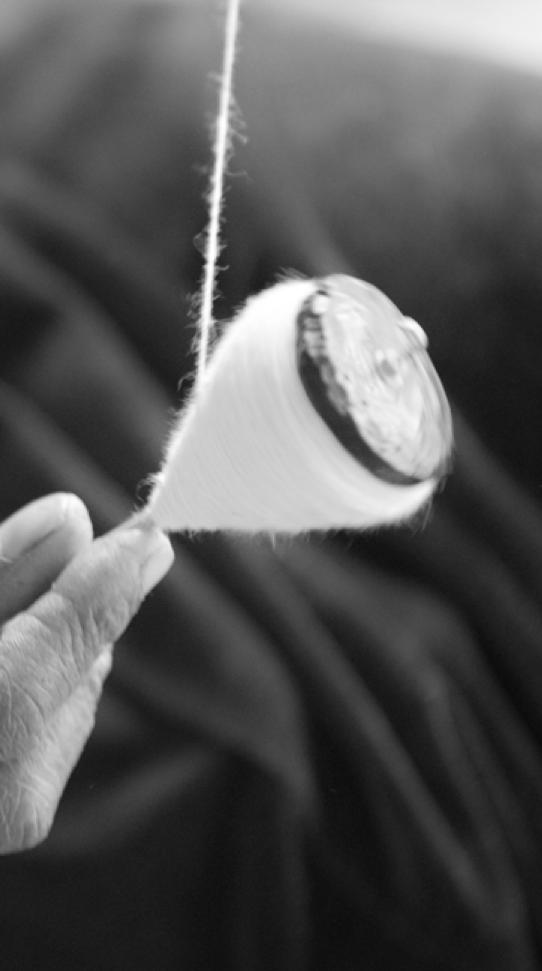
3 minute read
Materials
Strategy for Aritzia
CURRENTLY:
Advertisement
Aritzia has made a significant push in attaining various industry certifications in respect to the sustainability of its materials.
• Aritzia uses naturally derived materials such as viscose, Tencel®, modal and lyocell, derived out of wood pulp from forests from around the world.
• With viscose suppliers and Canopy, a non-profit organization focused on the protection of ancient and endangered forests, Aritzia promotes the use of renewable sources of wood pulp4 .
• Aritzia works to source more sustainable alternatives, including organic and Better Cotton, and is a member of the Better Cotton Initiative5 .
OPPORTUNITIES:
The scale at which sustainable and eco-friendly fabrications are being used is far lesser, compared to virgin polyester. Thus the use of more conscientious materials needs be expanded, which includes producution using less brand-new, or ‘virgin’ fabrics.
• Scaling the use of renewable and ethical fibres such as Tencel®, Organic Cotton, hemp, linen...
• Minimizing the use of virgin polyester; switching to recycled polyester and nylon
• Using Deadstock fabric for capsule collections/ new styles
MATERIALS
Strategy for Aritzia
SCALING THE USE OF RENEWABLE MATERIALS
• The use of ecologically sound and renewable materials is paramount in achieving sustainability. From Tencel® to Organic Cotton it is important to not only introduce them to replace virgin synthetics and other unethically produced materials, but scale their use across all in-house brands and product categories. • By tipping the scales in favour of sustainable material fabrications compared to non-sustainable ones, Aritzia would transoform its environmental impact score by drastically reducing chemical and energy usage in the growing and manufacturing stage, reducing its carbon footprint and protecting the health of workers at the bottom of its suplly chain6. Aritzia needs to go past the certifications and implement these strategies more broadly.
SWITCH TO RECYCLED POLYESTER
• The manufacturing and use of virgin polyester and nylon, should be limited if not completely eliminated, as it uses vast amounts of energy and produces exponential amounts of non-biodegradable waste. Recycled polyester, not only eliminates waste from the environment, but also supports a circular design system.

• Even the most intensive forms of synthetic fibre recycling, where poly or nylon is taken back to polymer and re-extruded into a new product, is around 80% less energy intensive than the manufacturing of virgin fibre, even for those fabrics that are shredded and re-spun- the savings are substantial6 .
DEADSTOCK
• Fashion brands are changing industry standards by building business models that incorporate used or leftover fabric into new collections, reducing reliance on raw resources7 . • Due to the inconsistent supply of deadstock, Aritzia could commit to making its 3 seasonal capsule lines, that are produced in very limited quanitities, from it. This would increase the product exclusivity and promote the boutque aesthetic Aritzia strives towards with its capsules, as well as generate additional value via positive environmental impact and waste reduction.
MATERIALS
Industry Trends
SCALING THE USE OF RENEWABLE MATERIALS Business case: NUDIE JEANS • 95% of all the fibers used in Nudie’s garments is Organic, Fairtrade or Recycled cotton, as the largest environmental impact of their products is from growing the raw material. The first goal was reached in 2012 when all the denim was made in organic cotton and in 2017, they reached the same goal for the rest of their products. Exploring new sustainable fabrics is also part of the design process at Nudie Jeans - in 2018, Nudie Jeans included more recycled fibers thereby decreasing its environmental impact8 .
SWITCH TO RECYCLED POLYESTER Business case: PATAGONIA • Patagonia has been making recycled polyester from post-consumer soda bottles since 1993 making it the first company to turn trash into fleece. Now the company makes its recycled polyester fibers from a blend of soda bottles, manufacturing waste, and worn-out apparel. Recycled polyester is in a wide range of Patagonia’s products from t-shirts to cold weather gear10 .
DEADSTOCK Bussiness Case: REFORMATION • Deadstock can be an efficient way for brands to experiment. About 15 per cent of Reformation’s products are made with deadstock, which it uses as a source of novelty and speciality fabrics. “If we want to try something different, deadstock allows us to do that without developing new fabrics or ordering a minimum amount,” vice president of sustainability Kathleen Talbot states9 .









